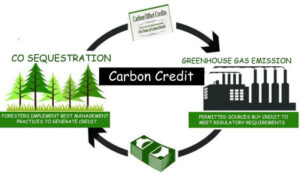What Qualifies For Carbon Credits?
admin
- 0
Qualifies For Carbon Credits
Several industry sectors have joined the growing carbon credit market. Business leaders are setting increasingly ambitious commitments to reduce global greenhouse-gas emissions. They are also looking for ways to hedge their financial risks during the transition to an energy-efficient future. Those who want to participate can earn credits to offset their emissions, or purchase allowances from companies that do.
There are many factors that go into the pricing of carbon.credit. One of the most important is supply and demand. If more groups start to undertake environmentally friendly activities, the prices will rise. This will increase the incentive to reduce CO2 emissions. There are a number of certifying organizations that verify carbon reduction.

In the past, lack of reference data was the biggest barrier to market growth. But the latest rule books have adopted new standards for emissions. This will help ensure the quality of carbon credits traded. A standardized product could also improve scale and liquidity. The Paris Agreement has introduced a tradable carbon credit system for countries to achieve their nationally determined contributions.
What Qualifies For Carbon Credits?
In a nutshell, a carbon credit is a metric ton of reduced carbon dioxide. This metric ton represents the equivalent of about 2,205 pounds of CO2 emitted into the air. The crediting system is a great way for companies to eliminate carbon from their operations and operate carbon-neutral. It can be used by individuals, businesses and organizations.
The best way to generate a carbon credit is to use an intermediary, such as a non-profit organization or consortium. These organizations can offer a range of services, including developing projects to offset emissions and advising clients. For example, the American Forest Foundation has a Family Forest Carbon Program for small landowners. This program pays smaller landowners to sequester carbon.
Other options include private and public standards. The United Nations Development Programme is an example of a public standard. It provides advice to governments on how to produce credits. This is an especially important role to play in the era of climate change. Similarly, a third-party auditor will verify a project’s validity.
The United States Environmental Protection Agency (EPA) has also recently adopted new emissions standards. This is an important step in reducing greenhouse gas emissions. The European Union ETS compliance market is another. These markets are primarily limited to specific regions. But with more industry sectors pledging to reduce their carbon output, it is only a matter of time before the voluntary carbon market gains traction.
The EPA has also adopted a new quality standard for carbon credits. This will allow companies to better measure the impact of their emissions. Using this metric, they can create a carbon credit for every metric ton of CO2 removed from the atmosphere. These credits can then be sold on the market.
In addition to voluntary markets, compliance markets are regulated by national governments. This allows for the sale of carbon credits to individuals and companies in the US. However, there are a number of regulations that limit the use of American credits in European markets.

